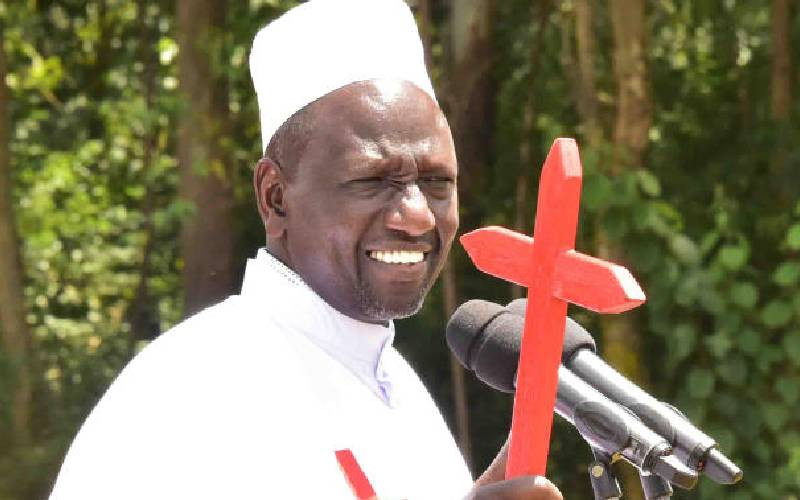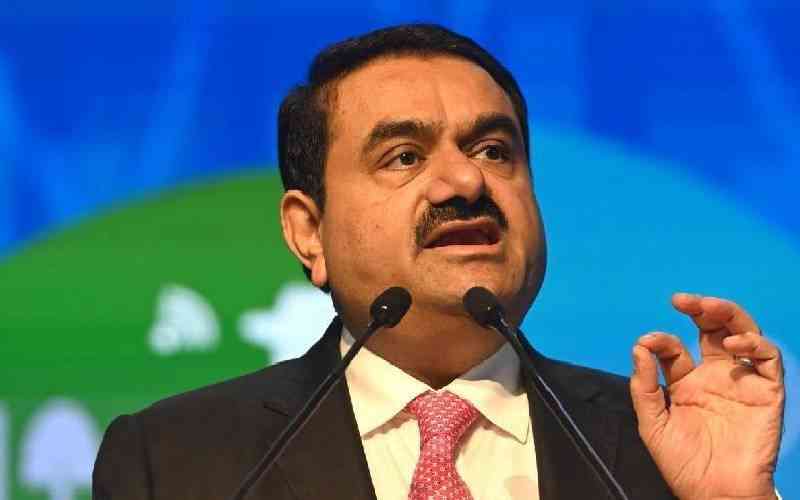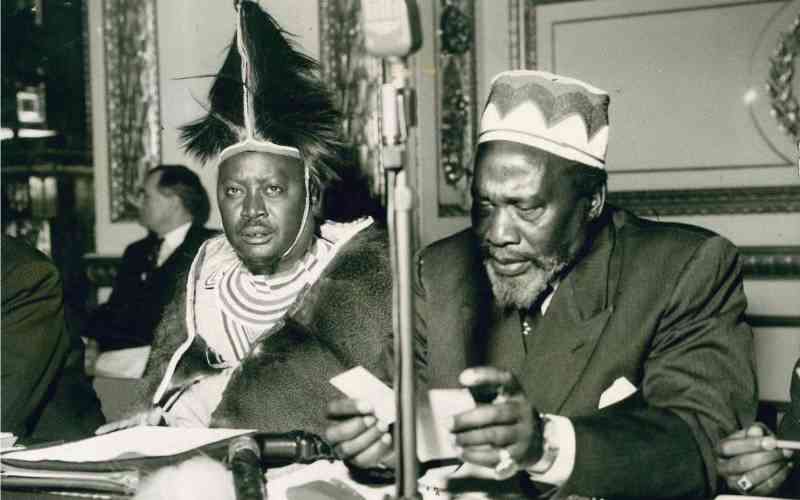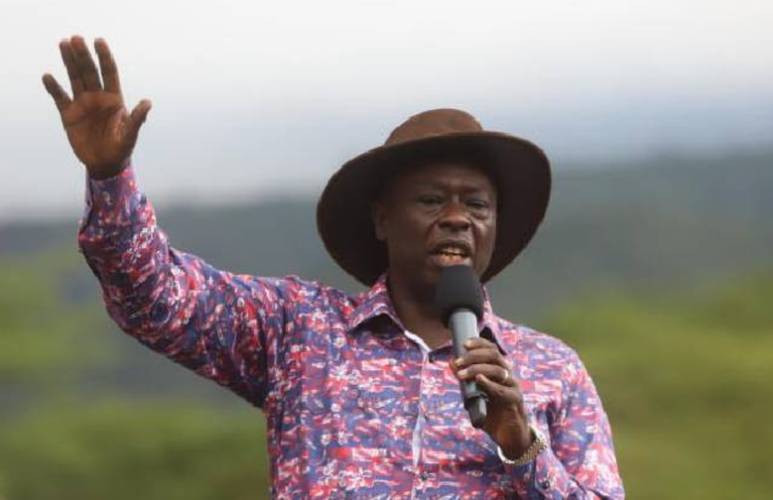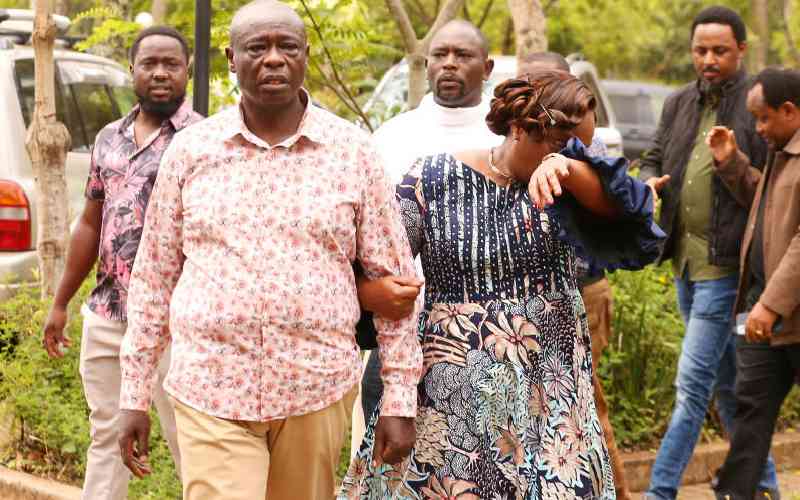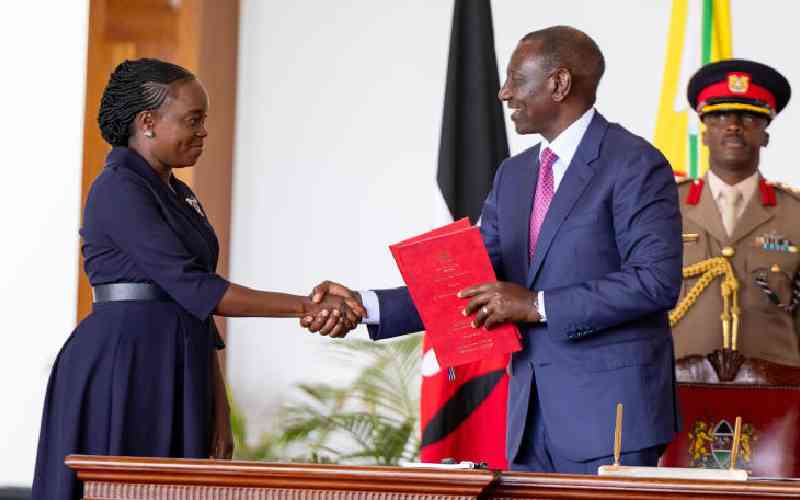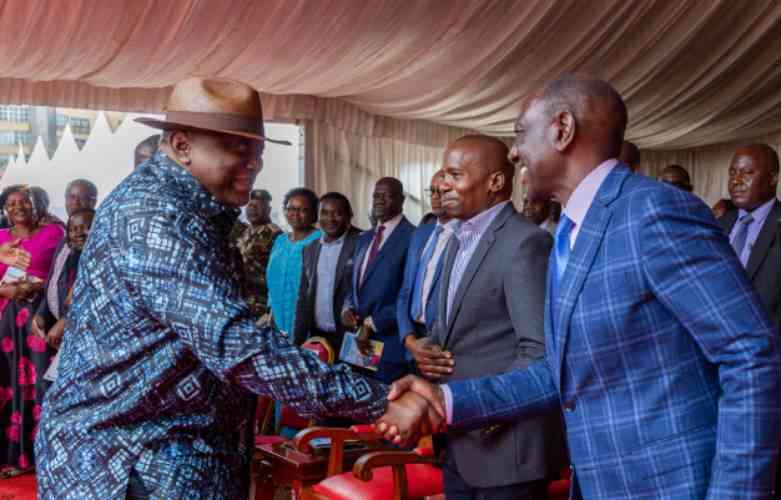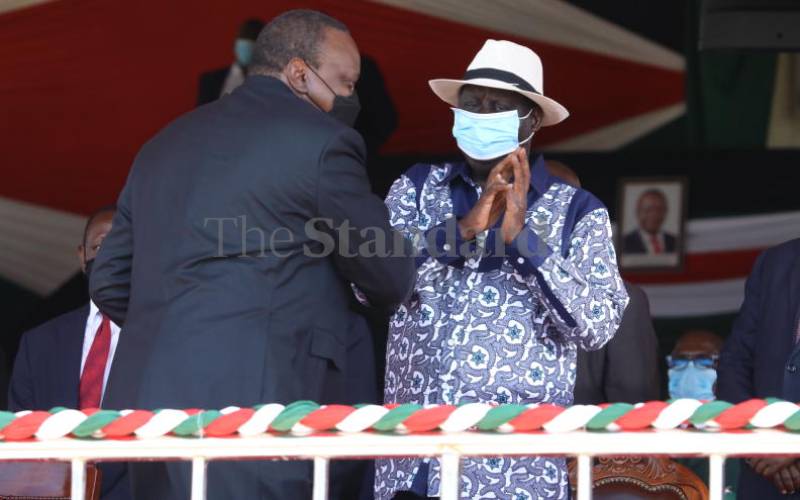
Last week’s Kiambaa by-election may very well be the call of the bugle and the tolling of political bells, ahead of the August showdown next year.
Kiambaa and Juja before it, are an inoculation against what is coming next year. It will steel up the Jubilee Party and its allies for a tough fight ahead, while sending the victors back to the political laboratories to prepare an even more lethal political germ.
The Nasa principals, led by Raila Odinga of ODM, will do well not to ask for whom the bells toll. For they toll for them, and not for President Uhuru Kenyatta.
Kiambaa was billed as the ultimate faceoff between the estranged political bedfellows that are President Kenyatta and Deputy President William Ruto. It did not disappoint. It is an open secret that the deputy president is the big force behind the United Democratic Alliance (UDA).
The party carried the day in Kiambaa, sending the DP’s allies into a glee of celebration. With a paltry 510 vote edge, UDA has raised the curtain on the political siege ahead.
The country has come a long way from the times when fate and fear of incarceration in a foreign jail mounted two mutually hostile politicians on to a common bandwagon in 2011.
The indictment of Uhuru and Ruto before the International Criminal Court (ICC) at The Hague bound the two politicians in an unlikely knot of mutual sympathy and self-preservation, after the atrocious activities that followed the flawed presidential election of 2007.
Three of the so-called Ocampo Six exited the stage early, leaving Uhuru, Ruto and journalist Joshua Sang to face the music before the ICC. Head of Public Service Francis Muthaura, police boss Mohammed Hussein Ali and Cabinet Minister Henry Kosgey, got off the hook in phase one of the court process.
Uhuru and Ruto lingered before the court for a while, their fate hanging precariously in the balance of international law. In the process, they recognised that they would either survive together or perish separately.
The rest is history of strife, bitter memories of humiliation in the corridors of the international law system, where they sat in the dock like common criminals, facing condemnation for some of the worst wrongs against mankind. Patience, strategy and goodwill paid off.
They were elected to the two highest offices in the land on a common ticket. They went on to defeat the ICC process — at least for now.
The mutual goodwill that brought victory to the now estranged pair three times has eroded in three years. With ICC seeming to be a bad, old dream in a dim past, and with little else left to bind them together, political convenience and romance have given way to mutual suspicion and mistrust.
Mistrust has morphed into strained mutual tolerance, while uneasy tolerance has mutated into public outbursts of mutual impatience, couched in defiant verbal affray. In the end, they have locked horns, with the biggest contest slated for August next year.
Yet the call of the bugle is only deceptively about President Uhuru. As a retiring president, Uhuru has little property in next year’s election. The political animosity between him and his deputy is difficult to understand, beyond the simple explanation that Ruto is not his preferred successor.
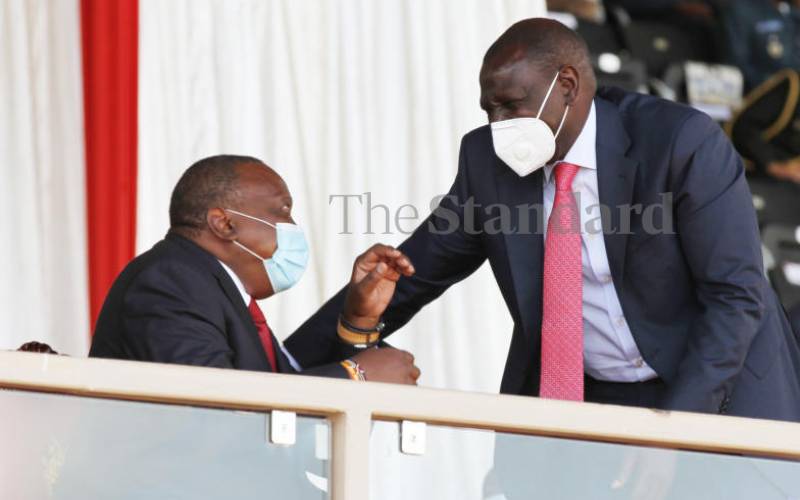
President Kenyatta’s choice
On Madaraka Day, Uhuru indicated that he was not averse to working with Raila, going forward. Is it possible that Raila is President Kenyatta’s choice? What of the One Kenya Alliance partners – Musalia Mudavadi of ANC, Kalonzo Musyoka of Wiper and Gideon Moi of Kanu? What should the Kiambaa by-election mean to them?
The people who should worry most about the tight race in Kiambaa, and the Jubilee loss, are the Nasa chiefs and the Kanu boss, and not Uhuru. Yes, it does not look good that as the sitting president, Uhuru is losing grip of his Mt Kenya stronghold.
The purpose for which he needed to worry about such things, however, ended in October 2017, after a successful repeat presidential poll. The same way he no longer needs the political support of his deputy, he has no more use for the Mt Kenya voter.
Experience shows that Kenya’s retiring presidents become lame ducks towards the end of their tenures. Their opinions carry little political weight. It was so with President Moi when, in 2002, Uhuru was his preferred candidate. Kenyans ignored Moi and went on to vote overwhelmingly for the Opposition.
Towards the end of his tenure in 2012–2013, President Mwai Kibaki left little doubt that Mudavadi was his man for State House.
He adorned him in all the trappings of royalty, from an overflow of security details at his various homes to an immaculate motorcade, all the way to making him deputise for him on diverse occasions, despite the presence of a vice president and a prime minister to boot. In the end, Kenyans turned up their collective nose to that choice.
It does not look like it will be different for Uhuru. While the Kiambaa outcome does not give Ruto the kind of comfort he needs to travel with towards August next year, it also shows that the president does not have full grip of his home region.
This should disturb anyone who could be angling for Uhuru’s support, even worse for his endorsement. The president’s Jubilee Party has lost two consecutive by-elections in his home county to Ruto-leaning parties. This is a loaded political statement.
In the coming months, Ruto will increasingly represent the future, while Uhuru the past. Migrations from what remains of Jubilee to the Ruto-affiliated UDA could be on the cards, not just in the Mountain region, but across the country.
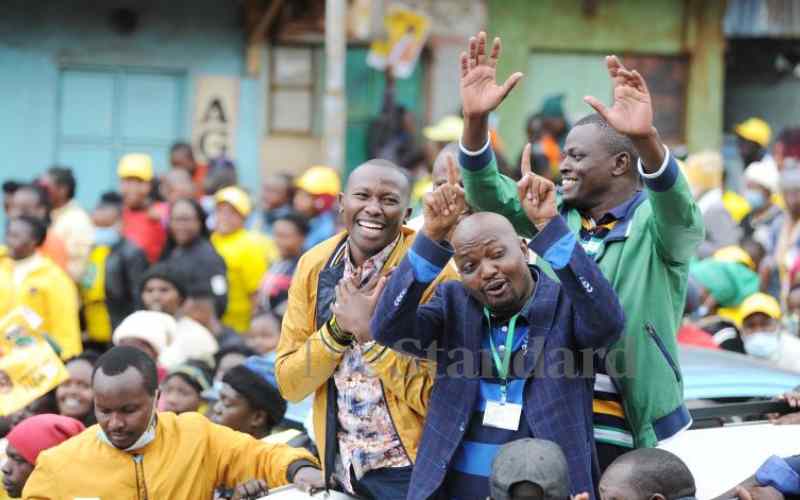
Death of Jubilee
Indeed, one of the major spinoffs of the animus between Uhuru and Ruto has been the atrophy, if not death, of Jubilee everywhere outside the Mt Kenya West region. More significant, however, is what Kiambaa should mean for Raila and his former friends in Nasa. His ODM party has since 2018 styled his Nasa co-principals as a burdensome yoke around his neck.
In the wake of their own calls of betrayal by Raila and ODM, he has flatly told them that he owes them nothing.
To appreciate the drivers of this dismissive bravado, you have to recall the refrain by Raila’s brother, EALA MP Oburu Oginga. He has boasted several times that they now have Uhuru, the deep State and State machinery. Armed that way, they have believed, they should romp into State House next year.
Yet Kiambaa and Juja should worry them. Neither Uhuru nor the deep State could deliver two constituencies in Uhuru’s own home county of Kiambu in by-elections.
To ask them to deliver Mt Kenya is to stretch incredulity beyond reason and purpose. If Raila does not mend fences with his Nasa co-principals, he is a political dead duck.
Raila’s worst nightmare resides in the possibility that his Nasa co-principals could cast away their scruples and team up with Ruto. That could easily be the end of the road for him.
Going forward, Raila must, therefore, continue to paint Ruto in appalling imagery. Ruto must come across as leproid and untouchable.
By casting him so, Raila makes it difficult for the Nasa co-principals to team up with Ruto, for fear of looking soiled. This way Raila secures his place in the 2022 race.
Not so secured, however, is victory. For, he must now skate on thin ice. The Nasa fallout has taken Western and Lower Eastern away from Raila’s catchment zones.
The hope that Mt Kenya could replace them is running thin. Indeed, Raila was previously marketed most pejoratively in the region, to the extent that to unmake the appalling images made of him here is truly a Herculean task.
Part of the reason Uhuru is losing grip of the Mountain is the notion that he is taking the Mountain to Raila.
As if he has sensed what promise to be difficult times ahead, Raila has started toning down the harsh rhetoric against his co-principals, even as they continue to disown him. At a recent public gathering in Mombasa, he declared that there was no bad blood in the camp.
And ODM has now written to the Registrar of Political Parties, asking the office to convene a meeting of the four key Nasa parties, so that they can discuss their differences.
Strange times call for strange pleas.
 The Standard Group Plc is a multi-media organization with investments in media platforms spanning newspaper print
operations, television, radio broadcasting, digital and online services. The Standard Group is recognized as a
leading multi-media house in Kenya with a key influence in matters of national and international interest.
The Standard Group Plc is a multi-media organization with investments in media platforms spanning newspaper print
operations, television, radio broadcasting, digital and online services. The Standard Group is recognized as a
leading multi-media house in Kenya with a key influence in matters of national and international interest.

